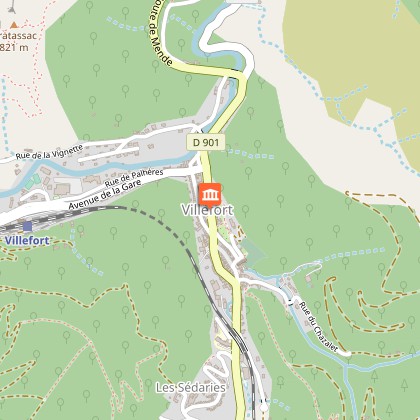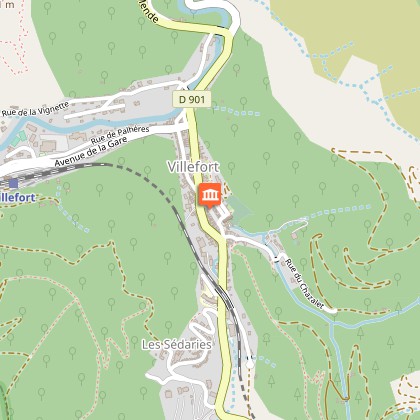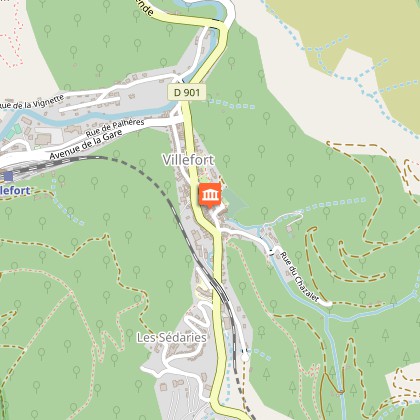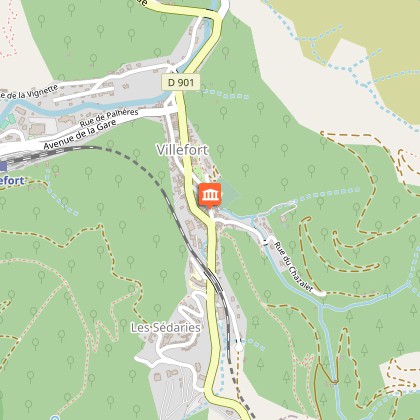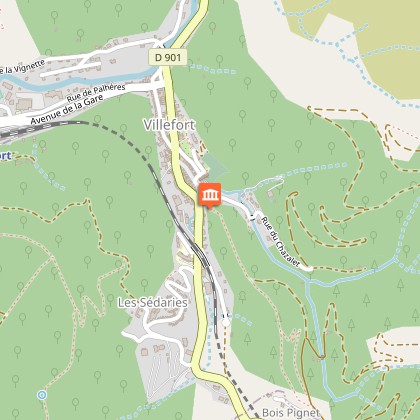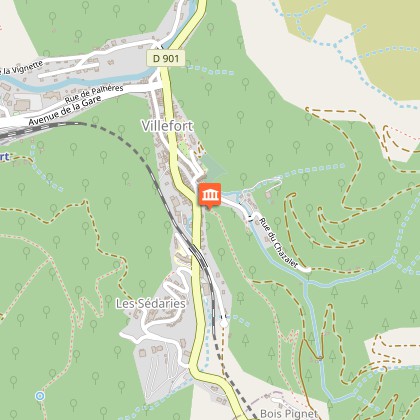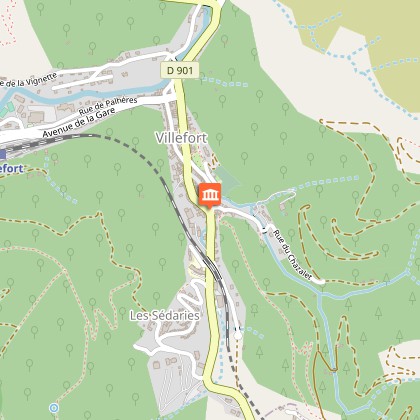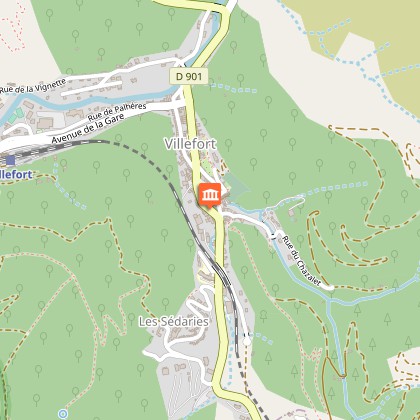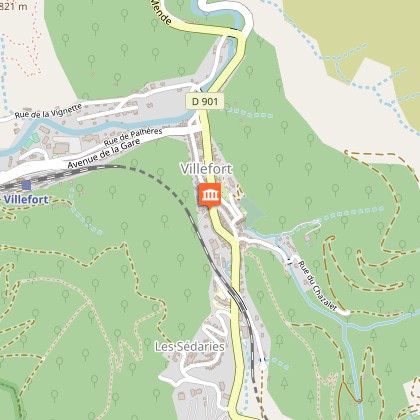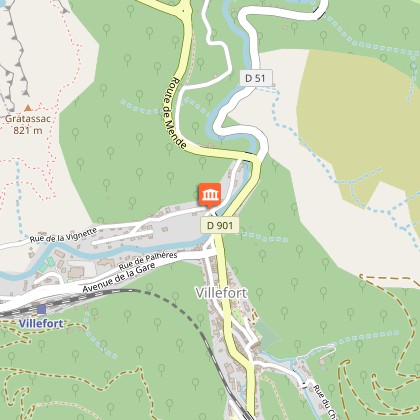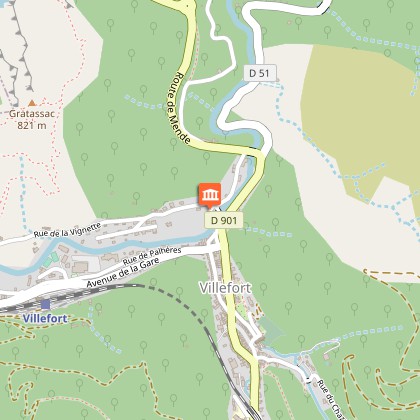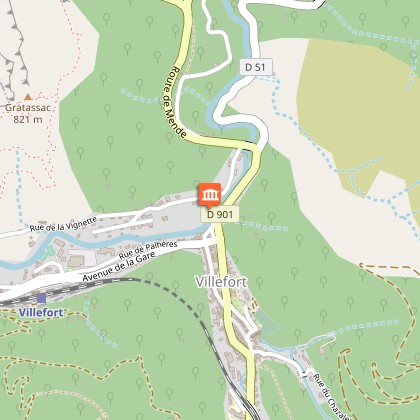Alert
Alerts
Villefort

IGN cards

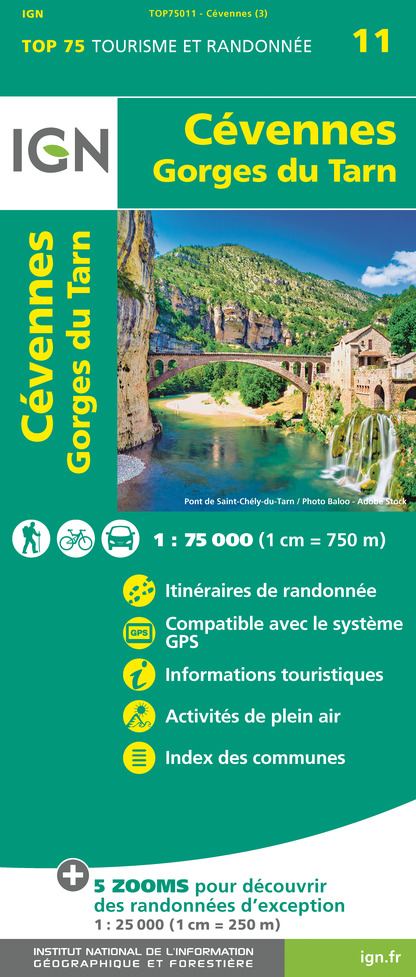










Description
Built at the foot of Mont Lozère on the Regordane Way, Villefort has developed its own forms of architecture, which make use of both schist and granite.
A few clarifications:• To reach Panels 5 (How the village is arranged) and 6 (Paris-Marseille train line), go up Rue du Chazalet and take the first lane on the right. Take a small path (GR 44) that climbs about 50 m to the viewpoint.• To get to Panel 13 (River network), continue along Impasse du Lavoir and take the first road on the left, which heads downhill to the river.
Technical Information
Altimetric profile
Starting point
Points of interest
Additional information
Departure
Pharmacy in the centre
Arrival
Place du Bosquet
Ambiance
Villefort, a one-road village at the foot of Mont Lozère, was built along a north-south geological fault between granite bedrock and schist. Its location on the Regordane Way, which was an economic and cultural artery during the Middle Ages, stimulated its growth. Villefort experienced another boom around 1860, becoming a true commercial hub of the Cévennes, when its train station – one of the main stations of the railway through the Cévennes – was built.
Access
From Mende on the D 901, or from Florac on the D998, then on the D 906 towards Génolhac to Villefort centre
Advised parking
On the main square
Public transport
Villefort SNCF railway station and PDF Guide des transports en LozèreFrom Nîmes, Clermont-Ferrand and Mende
Advice
This path has 14 numbered information panels.
Data author

